 Your new post is loading...

|
Scooped by
Farid Mheir
|
Le CIGREF, réseau de grandes entreprises, vient de produire un document qui a pour objectif d’expliquer le Cloud Computing du point de vue des grandes entreprise

|
Scooped by
Farid Mheir
|

|
Scooped by
Farid Mheir
|
I’m a dev at heart, so in the planning, I took it upon myself to be creative where I could. I utilized several services and even experimented with some of the newer web tech out there. In this post, I’ll run through the ‘backend’ of our wedding and provide detail on exactly what went into it.

|
Scooped by
Farid Mheir
|
In generation two, when you've got better battery life and apps that do better face recognition—maybe we're crying wolf a little early to a certain extent—but [what happens when] you get to competing products?” Adam said. “The idea that you'll have recognition of objects and infrared tags so it will always know what you're looking at—that kind of thing, it will be gathering information. It's more the face recognition stuff that changes society. You're never going to see a stranger as a stranger again.
"It destroys having multiple identities, and I find that quite a scary concept."

|
Scooped by
Farid Mheir
|
E-commerce companies that make everything from bedding to eyeglasses are trying to build premium brands at discount prices by cutting out middlemen and going directly to manufacturers.
These direct-to-consumer companies are raising large sums from investors, who see great potential in the idea. In February, Julep raised $10.3 million from Andreessen Horowitz and Maveron.

|
Scooped by
Farid Mheir
|
Whether you have resumes, spreadsheets, or just a business card from a promising candidate, you will have the ability to add these individuals to Recruiter. No more scattered and lost leads across the recruiting team; they can all be in one place. What’s truly unique about our solution is that records you create for your leads are linked to their LinkedIn profile. Information automatically stays up to date as members update their profiles, so you don’t have to do the work yourself. And of course you get the additional insight from status updates, shared connections, skills, recommendations and more to help you really connect with individuals you are interested in.

|
Scooped by
Farid Mheir
|
Using evidence and a bit of logic, I bet the iWatch will be much less a time piece and much more platform for auto-analytics and managing yourself.

|
Scooped by
Farid Mheir
|
Acquiring organic traffic requires the right keywords, well-researched and developed content, and precision timing. The Takeaway - Useful content and a solid, well-researched roadmap is the best way to acquire organic traffic.
- If your content is serving a purpose, is accessible, and is easy to consume – your readers will build all of the links you will ever need, and your online presence will flourish as a by-product.
- Put in the time, do the research, build your own websites, talk to everyone you can, TEST, and you will start seeing improvements in your organic search.

|
Scooped by
Farid Mheir
|
Infographic: Over the last four decades, the recruiter has transformed from a pompous, sales-driven corporate into a more social, relationship-focused cyber sleuth.

|
Scooped by
Farid Mheir
|
Walmart won’t say much about how much it sells online. Global E-Commerce CEO Neil Ashe will only say the company is on track to do more than $9 billion in annual online sales. But even if only half those sales come from people using the search engine, a 20 percent improvement still comes to almost $1 billion. For a company that has famously made its fortune on frugality, $1 billion for the price of 15 engineers is math Walmart surely appreciates.

|
Scooped by
Farid Mheir
|
Through GPS, most mobile users can be quickly identified by their daily movement patterns, according to a study.
For the study, the research team studied 15 months of anonymous mobile data for roughly 1.5 million people. What they found was that, if they got accurate hourly updates on a person's whereabouts, tracked by their mobile carrier's cell towers, four "data points" were all they needed to figure out the person's identity 95% of the time.

|
Scooped by
Farid Mheir
|
Self-driving cars, computerized glass, search, mobile phones, and... local delivery?

|
Scooped by
Farid Mheir
|
Wal-Mart will use its stores to amplify the power of its online shopping services, beef up its mobile application and put more effort into its mobile payments offering as competition with online retailers heats up...
“Two-thirds of the U.S. population are located within five miles of a Wal-Mart, by combining digital assets and physical assets, we can get closer to customer and enable shipping that’s affordable to us and expedient to the customer,” said Jeff McAllister, Walmart.com’s senior vice president of innovations.
Avec trois à sept contacts par an, dont un seul via Internet, les relations entre assurés et assureurs sont loin d'être aussi « digitales » qu'elles peuvent l'être avec les banquiers ou les acteurs de la téléphonie mobile et du Web. Néanmoins, la transformation digitale est bien là. Pour en mesurer l'état d'avancement, l'Argus de l'assurance a organisé une table ronde, en collaboration avec Exton Consulting. Échanges fructueux et analyses poussées. Nos six invités ont livré leur vision de cette révolution et évoqué les freins rencontrés.
Via DEMARLE chris, Renaud Finaz

|
Scooped by
Farid Mheir
|
Walgreen's E-commerce VP Miguel Almeida explains the offline and online approaches that has helped the company's growth as an omnichannel retailer.

|
Scooped by
Farid Mheir
|
As retail channels continue to evolve and become increasingly integrated in the eyes of the consumers, multichannel retailers will face an increasingly complex sales tax compliance environment.

|
Scooped by
Farid Mheir
|
A Toronto-based company is reimagining the QWERTY keyboard on your smartphone by streamlining the keys, letting you type easily without being precise.

|
Scooped by
Farid Mheir
|
Like all newspaper companies, The Times is dealing with tough challenges as print advertising — long its major source of revenue — continues its sharp decline."Safe arrival on the shore of stable profitability in the digital age won’t be achieved in 2013; it is a long journey, with headwinds all the way."

|
Scooped by
Farid Mheir
|
How will Google Glass work? Looking at what's been revealed so far and current head-mounted displays, a picture begins to form.

|
Scooped by
Farid Mheir
|
Les chiffres clés du e-commerce en France 2012

|
Scooped by
Farid Mheir
|
New York City plans to replace the maps in its subway stations with touch screen displays that will provide simple directions and real-time service alerts.

|
Scooped by
Farid Mheir
|
As I walked up to the register at a Starbucks in lower Manhattan, I took out my smartphone, told the barista I'd like to pay with Square, and then scanned my iPhone and walked out. It was seamless. Easy. And took less time than for the customer in front of me, who fumbled with quarters and had to wait for change when paying for her coffee.

|
Scooped by
Farid Mheir
|
Rather than fret about the dangers of 'showrooming', retailers should provide wi-fi for mobile users, as this influences the choice of store for almost 80% of consumers. What are consumers using in-store wi-fi for? Though retailers fear price comparison, and 60.8% of smartphone owners are using in-store wi-fi for this, many other activities should actually be beneficial for the retailer. For example, 57.3% are using wi-fi to find product reviews, something which indicates they are close to a purchase and just require some reassurance (and there's much stores can do to assist here). 47.2% are finding or accessing offers to use in-store, while 36.5% are browsing the store's website. Both very positive activities for stores, especially if they have mobile optimised sites.

|
Scooped by
Farid Mheir
|
If you are ready to embrace life after the death of the newsprint flyer, I recommend two key first steps: 1) Get the basics right. Use data from a loyalty program to understand your customers. Be able to discern promotions that work from those that fail. Bordering on shocking is the number of retailers that aren’t able to say which promotions work, who are the key customers, and which promotions drive the right items and the right categories to the right customers.
2) Focus on alternative promotions. Start testing them now. Instead of 16-page flyers that go into the Saturday mailbox, deliver 1-1 targeted flyers delivered to a mobile phone, via email, the web or social media. Don’t wait until the day until the flyer is not working at all. Get started now to build a true 1-to-1 relationship that creates not merely a satisfactory but dazzling experience for your customer and drives emotional loyalty to your brand.

|
Scooped by
Farid Mheir
|
Findings from two companies that apply science to try to decrease online shopping fraud and increase sales. This morning, I covered the launch of Sift Science, a brainy startup from ex-Googlers that’s applying machine learning to detect fraud patterns in online retail. Sift Science co-founder Brandon Ballinger told me that during beta testing with services like Airbnb and Uber, his company had observed a million different signals that flag any one buyer as a potential fraudster. For instance, beware of people who try to buy something with a Yahoo email account — they’re twice as likely as the norm to be fraudsters — but users of AOL and Outlook.com email domains are much more likely to be safe.
|

Curated by Farid Mheir
Get every post weekly in your inbox by registering here: http://fmcs.digital/newsletter-signup/
|
 Your new post is loading...
Your new post is loading...







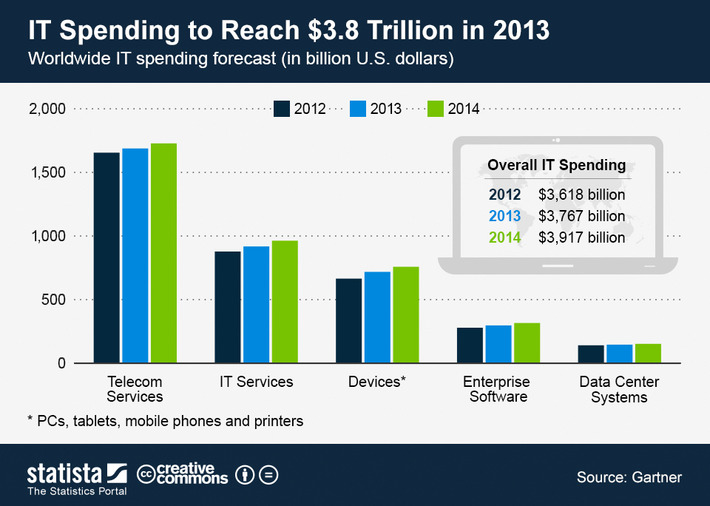

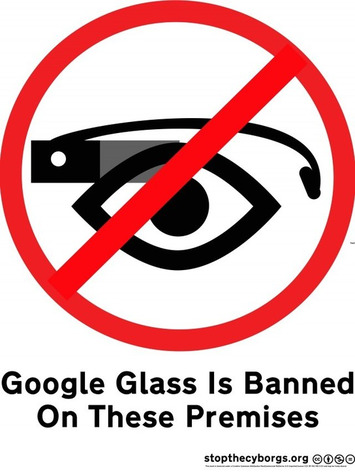



![The Evolution of the Recruitment Consultant [Infographic] | WHY IT MATTERS: Digital Transformation | Scoop.it](https://img.scoop.it/Y0ZOrWvihjZKXOz7Yhdc__BmLys6hX2ydzAVDqN3660=)
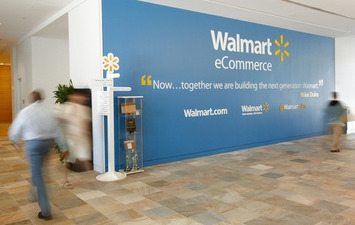
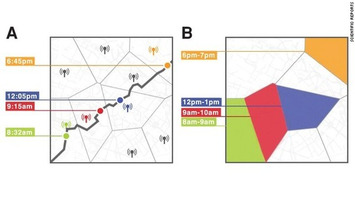

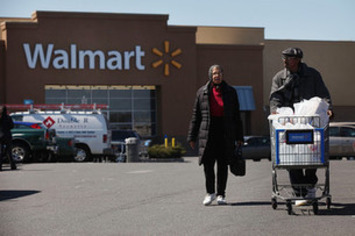

![Try 'Sloppy Typing' on This Reimagined QWERTY Keyboard from a Canadian Startup [VIDEO] | WHY IT MATTERS: Digital Transformation | Scoop.it](https://img.scoop.it/0V217X_D45OblrMVWAq4vvBmLys6hX2ydzAVDqN3660=)






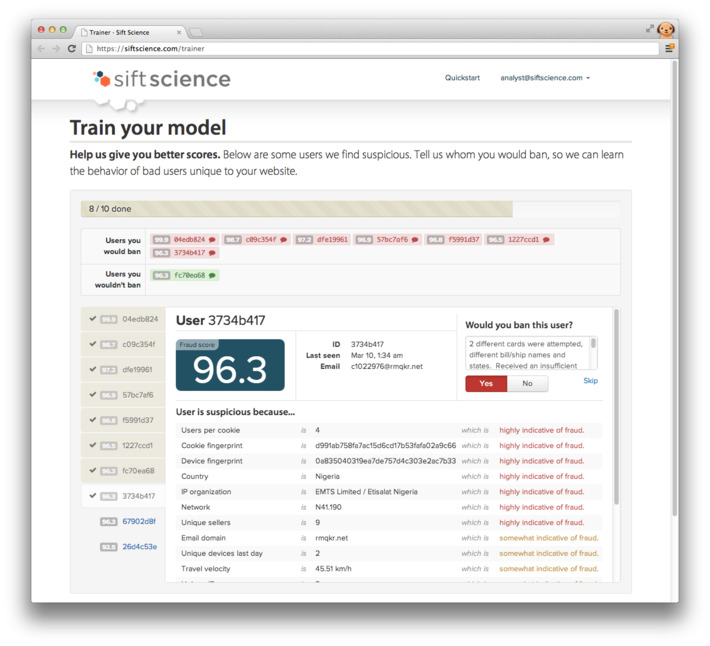








Information de référence utile pour les technologues francophones.